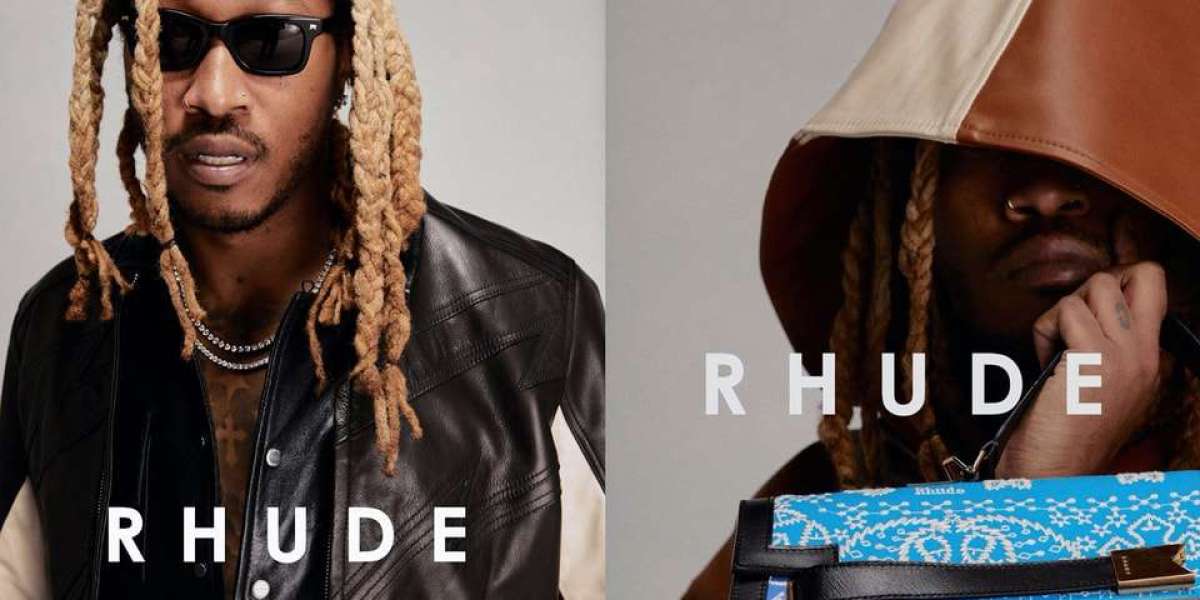In the world of fashion, where brands often wrestle with the push and pull of artistry and commerce, few have achieved the kind of rapid, culture-defining ascent as Rhude. Founded in 2015 by Rhuigi Villaseñor, a Filipino-American designer with no formal training, Rhude has become synonymous with a brand of luxury streetwear that melds American iconography with European tailoring. What began as a single T-shirt sold to friends has evolved into a full-fledged fashion label worn by the likes of LeBron James, Jay-Z, Kendrick Lamar, and A$AP Rocky.
At its core, Rhude is more than clothing—it’s autobiography. Villaseñor’s personal story, from emigrating to the United States as a teenager to navigating immigrant life in Los Angeles, is embedded in the textures, graphics, and silhouettes of his collections. The brand’s early pieces—like the now-iconic “Bandana” T-shirt—showcased a mix of street-savvy aesthetics with thoughtful references to American culture. This is not simply streetwear for the sake of trend; it is coded with commentary, history, and a certain aspirational grit.
The DNA of Rhude
Rhude’s ethos is paradoxical: luxury meets street, minimalism intersects with maximal identity. One could see a pair of cargo pants with exaggerated proportions or a vintage racing jacket with high-end tailoring—and both are unmistakably Rhude. The brand’s hallmark lies in balancing ruggedness with refinement. Distressed denim pairs with Cuban-collared silk shirts; sporty silhouettes are trimmed with luxe materials like Italian leather and fine wool. These contrasts reflect Villaseñor’s multicultural upbringing and his deep engagement with American pop culture.
Perhaps what truly sets Rhude apart is its nuanced understanding of Americana—not as a monolith, but as something diverse, complicated, and ever-evolving. Villaseñor reinterprets symbols of the American dream—cars, sports, Marlboro ads, military wear—not with blind nostalgia but with critique and curiosity. His pieces often read like artifacts from a parallel universe where streetwear was always designed with the same care as a Savile Row suit.
A Star-Studded Rise
Rhude’s growth has been meteoric. Within five years of its founding, the brand was showing collections in Paris, placing garments in high-end retailers like SSENSE and Neiman Marcus, and collaborating with major brands like Puma, McLaren, and Thierry Lasry. Such success, especially for a brand so young, is rare in the fashion world.
Much of that rise can be attributed to Villaseñor’s cultural fluency. He understands not just how to make a garment, but how to make it resonate. His pieces don’t simply sit on shelves—they create conversations. Rhude is especially adept at tapping into the music and sports spheres, using celebrity visibility not merely as marketing but as mutual storytelling. When a figure like Future wears a Rhude piece, it’s not product placement—it’s alignment.
Villaseñor's close relationships with figures across entertainment, from Pusha T to Lewis Hamilton, have further accelerated Rhude’s rise. These aren't one-off moments; they're part of an ongoing narrative in which Rhude functions as a cultural signal. Wearing Rhude suggests taste, but more than that, it signals a commitment to authenticity and a rejection of fashion orthodoxy.
Beyond the Hype
Unlike many streetwear labels that ride the wave of drop culture and social media virality, Rhude has aimed for longevity. Villaseñor has frequently stated that he wants Rhude to be seen not just as a streetwear brand, but as a fashion house. That ambition is becoming reality. In 2022, Villaseñor was appointed creative director of Bally, a Swiss luxury fashion house—an unusual but telling move that affirmed his place in the high fashion arena.
His tenure at Bally further informed his approach to Rhude, bringing even sharper tailoring, more structured design, and a broader global outlook. This shift has been noticeable in Rhude’s recent collections, which move further from graphic-heavy streetwear into sleek, modern menswear silhouettes: think oversized trench coats, leather suiting, and hybrid outerwear that bridges function and form.
Still, Rhude hasn’t lost its edge. The brand’s Fall/Winter lines continue to evoke the raw energy of the street, filtered through Villaseñor’s increasingly refined lens. Each collection feels like a chapter in a novel he’s still writing—one that traces the arc from immigrant hustle to fashion elite.
The Future of Rhude
If Rhude’s first decade was about gaining respect and visibility, its next chapter will be about legacy. In an era where trends come and go in a matter of weeks, Rhude is building a platform meant to endure. Villaseñor has spoken of expanding into womenswear, lifestyle products, and potentially even hospitality. The goal is to create an ecosystem, not just a clothing line.
More importantly, Black Rhude Hoodie is providing a blueprint for what modern American fashion can be: inclusive, hybridized, unapologetically personal. Villaseñor represents a new generation of designers who aren’t bound by geography, tradition, or rules. He draws from a kaleidoscope of influences and turns them into garments that feel both deeply specific and universally resonant.
In a way, Rhude’s real achievement is emotional. It captures a feeling—of ambition, identity, movement. It’s for people who remember growing up without much but wanting everything, who believe that luxury doesn’t have to be inherited—it can be earned, and sometimes stitched from memory.



